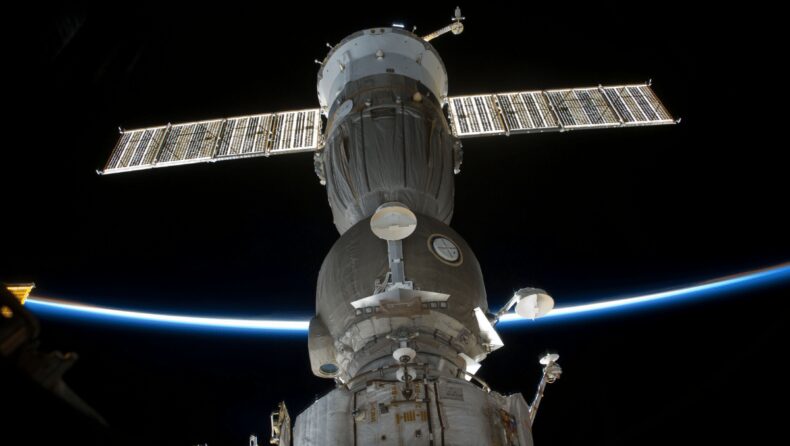A micrometeoroid may have damaged the Soyuz spacecraft that sent two cosmonauts and a NASA astronaut to the station.
Russian astronauts only travel to and from the International Space Station using the Soyuz spacecraft. The subsequent Soyuz, launching on February 20 with three astronauts aboard—Sergey Prokopyev and Dmitry Petelin from Roscosmos, the state corporation that oversees Russia’s space industry, and Frank Rubio from NASA—will now launch with all of its seats empty. The damaged Soyuz will make an empty return to Earth after departing the space station, most likely in March.
The wrecked ship had arrived in September. The astronauts will now be in orbit for a few more months, despite their original March return date. It is scheduled to arrive with some experiments and cargo at the usual return site in Kazakhstan.
What caused the Damage in SOYUZ MU-22?

A micrometeoroid most likely caused the damage to the Soyuz spacecraft that was docked at the space station. Ground controllers discovered a coolant leak on December 14 as the cosmonauts were about to depart the airlock of the space station to execute a spacewalk.
The spacewalk was promptly abandoned after Roscosmos, the Russian space agency, confirmed that the leak was emanating from a tiny, one-millimeter-wide hole in an external cooling line. Since then, NASA and Roscosmos have been working together to decide whether the spacecraft is safe to carry the crew home or if a rescue craft needs to be launched.
Engineers on the ground examined the damaged area while astronauts aboard the space station examined the leak using a camera at the end of a bionic manipulator.
The coolant is used to maintain a suitable temperature within the capsule. The teams found that without the coolant, inside spaceship temperatures might rise above 100 degrees Fahrenheit. The spacecraft’s computing systems could be hampered by the high temperature and humidity, in addition to making the crew’s atmosphere uncomfortable.
Based on an investigation, the damage was brought on by a micrometeoroid with a diameter of one millimeter that was moving at a speed of about seven kilometers per second, or more than 15,000 miles per hour, as per Sergei Krikalev, executive director of the human spaceflight programs for Roscosmos.
It was nearly impossible to try to do a repair in space because the leak was at the end of the Soyuz that was furthest from the docking port. Thus, according to him, since the procedure is so risky and difficult, it would be safer to just replace the vehicle rather than try to fix the hole and fill the radiator with coolant.
What About the Member Aboard?

The astronauts on the station are not in danger, according to NASA and Roscosmos, and they have been carrying out research and scientific experiments, including growing tomatoes, while teams on the ground worked on a solution to the issue.
The space station currently has seven people on board: three from the Soyuz craft, which arrived in September, and four from SpaceX’s Dragon spacecraft, which arrived in October and is currently docked to the station.
In the event of an emergency, like a significant leak that would require an evacuation, there is a heightened level of risk until the new Soyuz arrives. As emergency lifeboats, the seven astronauts now stationed use the Soyuz and a Crew Dragon spacecraft. Officials, however, were measured about the risks.
Roscosmos will pack the Soyuz MS-22 spacecraft that will return to Earth with gears and science experiment results that won’t be compromised by higher temperatures. And instead of a human crew, the new Soyuz MS-23 spacecraft will launch with more cargo.
The shifting of Soyuz vehicles in February and March will probably force NASA to alter the schedule for prospective trips to the space station, such as the forthcoming SpaceX Crew Dragon launch.
When the unmanned Soyuz MS-22 returns to Earth, station engineers will closely monitor the temperatures inside to better understand the heating environment on such a damaged spacecraft.
Therefore, Montalbano declared, “We’re going to fully utilize this vehicle all the way until it falls back on Earth.”













